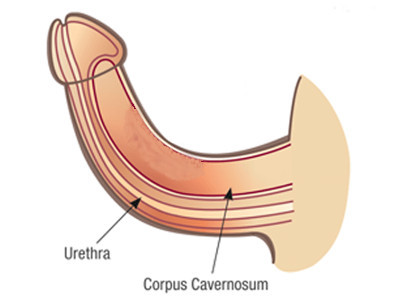Congenital Penile Curvature

Patient notices bend in the penis during erection.
It has been present many years from the time of adolescence Penis is usually long, the bend can be upwards, downwards or lateral and oblique. . Typically there is no palpable scar, no pain, no traumatic event that preceded the deformity. The urethral opening is normally placed.
Causes :
The cause of curvature may be due to excessive elasticity on one aspect of the penis vs. the rest of the penis. So for example, in the man who has a ventral/downward curvature, there is more elasticity on the dorsal/top surface of the penis which expands more than the underside during erection, resulting in the downward curvature.
Diagnostic Tests :
THERE IS NO SPECIAL TEST REQUIRED TO DIAGNOSE THE CONDITION, IT IS CLINICAL FOLLOWED BY EITHER DRUG OR SIMPLE INJECTION TEST TO CHECK THE CURVATURE DURING ERECTION.
Treatment :
A variety of surgical procedures have been used, but all essentially work on the principle of shortening the convex side to equal the concave aspect. The initial maneuvers are similar, usually by making a degloving circumferential incision proximal to the head of the penis.
Once the phallus is degloved, an artificial erection is created to identify the deformity, and then Buck’s Fascia is elevated over the opposite side of the curve to expose the tunic of the penis. A variety of plication or tucking procedures can be performed ( Nesbit procedure, yachia procedure, Schroeder procedure, modified corporoplasty.
All of these procedures have a low risk of penile shortening.
In those who do not want reduction in length can be managed by incision and grafting at the site of maximum curvature.